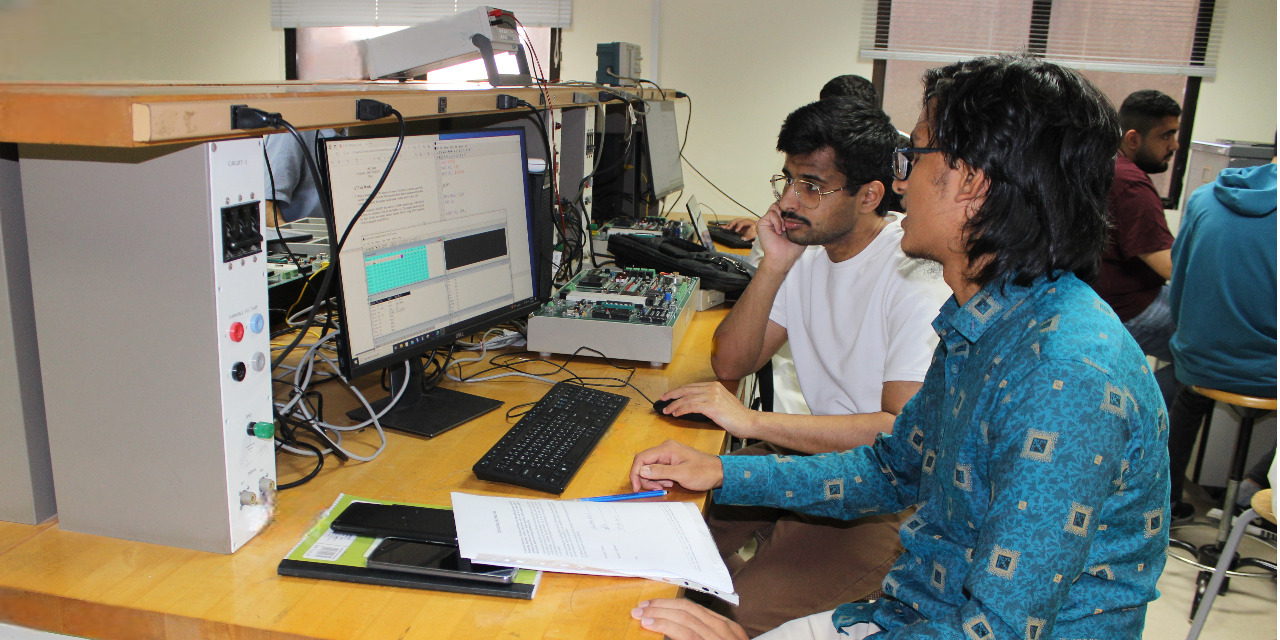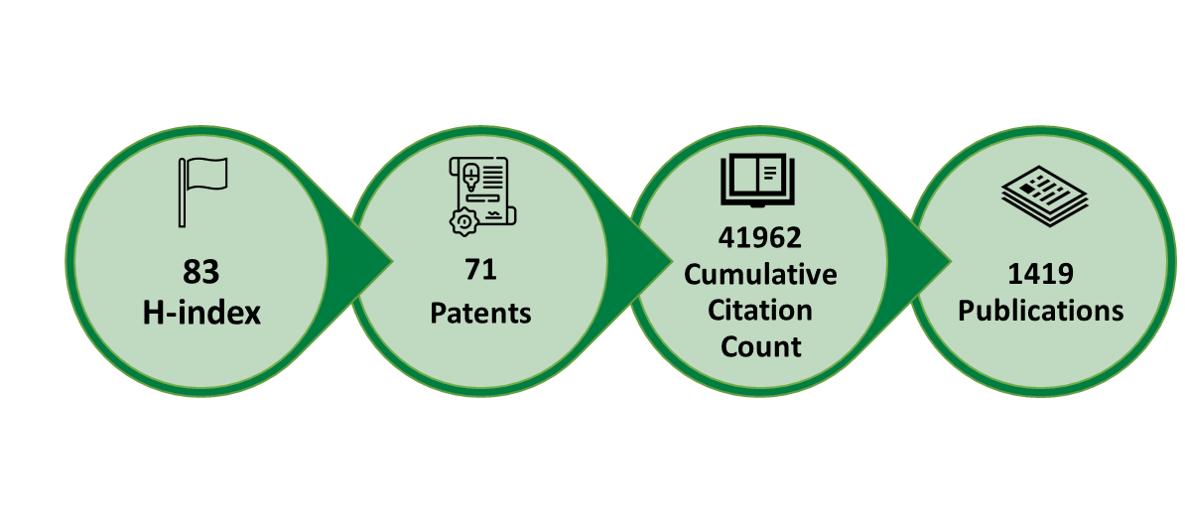Dream Big, Dream EE

Welcome to Electrical Engineering Department

The Future Starts Here

The Road to Success Begins

The Electrical Engineering department at KFUPM came into existence with the establishment of the University of Petroleum & Minerals in 1967. It is one of the largest departments in the University with an average number of students being approximately 900, 16% of whom are in the graduate program. The department provides 2 four-year undergraduate programs, Bachelor of Science in Electrical Engineering and Bachelor of Science in Electrical Engineering and Physics. The graduate program offers Master of Science and Master of Engineering in Electrical Engineering, Master of Science in Telecommunication Engineering, Master of Sustainable and Renewable Energy, Master of Wireless Communication Networks, and Ph.D. in Electrical Engineering.
The department has about 61 full-time faculty members in 6 specialized areas of research. The Groups in the department are: Energy Systems, Communications, Electronics, Control Systems, Electromagnetics, and Digital Signal Processing. Additionally, a pool of experienced engineers and technicians maintain more than 30 laboratories in the department.
To be globally known for skillful graduates and quality research with focus on national needs.
For more information, you can visit the following :

On March 12, 2025, the Applied Electromagnetics Research Area hosted an insightful seminar titled "Enhanced Wireless Inter-Chip Communication Performance Using Symmetrical Layers and Soft/Hard Surface Concepts," presented by Dr. Yazan Al-Alem. The session focused on the crucial role of electrical interconnects in integrated circuits (ICs) and their growing challenges as operating frequencies continue to rise. Issues such as higher losses, RC delays, and mutual coupling pose significant obstacles to system performance, prompting the need for innovative solutions.
Dr. Al-Alem highlighted wireless interconnects as a promising alternative, offering new avenues to overcome these limitations. The seminar explored advanced techniques, including symmetrical layers, soft/hard surfaces, and electromagnetic bandgap (EBG) structures, which help minimize interference and efficiently direct radiated energy to receiving antennas. These advancements contribute to lower losses and enhanced system performance, making them vital for next-generation electronic systems.
The event encouraged active participation from students and researchers, fostering insightful discussions on the future of high-frequency interconnects. By bridging theoretical advancements with practical applications, the seminar underscored the importance of continuous innovation in wireless communication technologies.



Electrical interconnects between various sub-circuits within an IC, or between several adjacent ICs, play a vital role in defining the performance limits of any system. As the frequencies of operation have been into a gradual increase, the design of interconnects, whether within the IC environment (intra-chip) or between several adjacent ICs (inter-chip), turn into a more challenging task. As the frequencies of operation increase, the proper interconnect guiding structure dimensions become infeasible to realize, or it might exhibit a high level of losses and large intrinsic RC time delay. Moreover, with the increase in the number of interconnects, the mutual coupling between the interconnect structures becomes more severe, not to mention the complexity and the associated cost of such design. The concept of wireless interconnects (wireless intra-chip/inter-chip communication) emerged as a suggested remedy to the high-frequency interconnect problem, targeting several potential applications, such as wireless clock distribution. In this seminar, we introduce the concept of symmetrical layers as a general approach to eliminate the undesired destructive interference and redirect the wasted radiated energy to free space toward the receiving antenna. The use of soft/hard surfaces and electromagnetic bandgap (EBG) structures to guide the radiated energy toward the receiving antenna is studied thoroughly. The use of such concepts has a significant advantage, in focusing the energy toward the receiving antenna and eliminating the spherical spreading losses arising from the radiated spherical wave nature.

Building 59-2004
12 Mar, 2025
11:00 AM - 11:50 AM
The Electrical Engineering Department (EE) at KFUPM provides a world-class education and innovative learning experiences for both undergraduate and graduate students.
Click on the following button to access online admissions application portal :